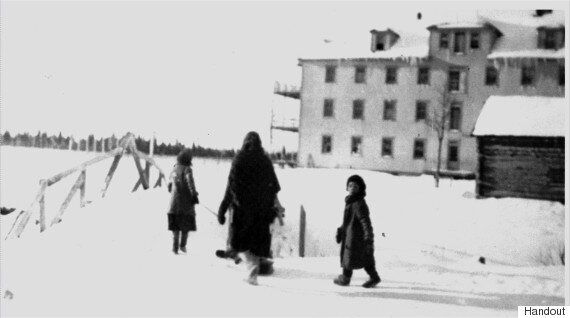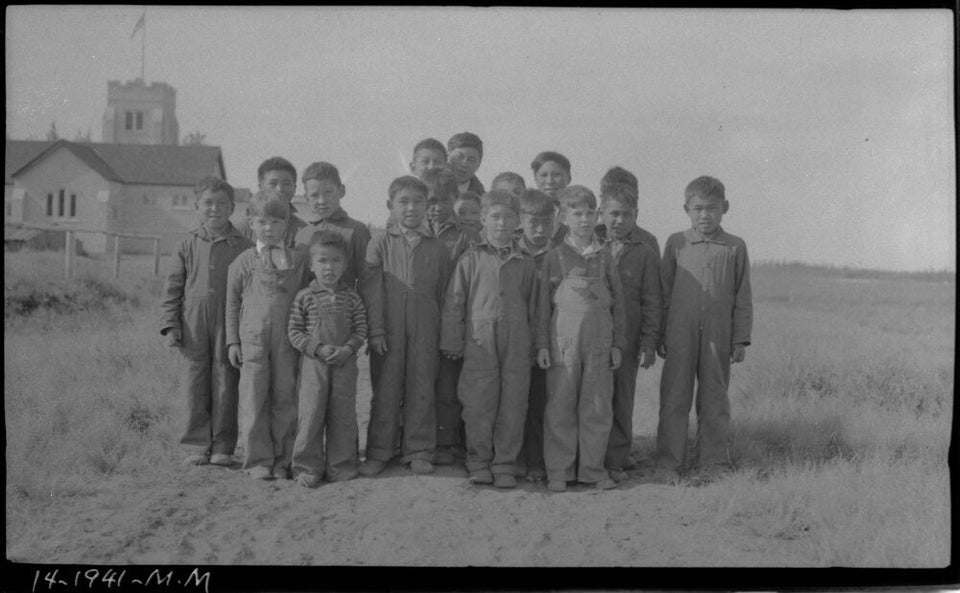
On October 21, 1974, 13-year-old Charlie Hunter and his friends headed out to go skating on the lake beside St. Anne's Residential School in Fort Albany, Ontario. There had been a flash freeze and the first ice of the season presented an opportunity too good to ignore. The school staff was inside having a meeting and it seemed like the perfect opportunity for boys to do what boys do. But with the weather starting to warm again, the ice was not strong. As they chased each other on the ice of the lake, a partially blind student Joseph Koostachin fell through into the cold water.
Charlie came to his aid and pulled Joseph to safety. But in doing so, Charlie slipped under the ice. The children were now shouting for help. Joseph Kataquapit, a local grounds keeper, rushed down to the shore and tried to pull Charlie out of the water. By the time the boy was pulled from the ice he had been under the water for at least 15 minutes. Headmaster Mr. Harp had the body flown to Timmins for an autopsy. Charlie Hunter's body was then sent to Moosonee where it was buried.
But Charlie wasn't from Moosonee. His family lived over 500 km away in the isolated village of Weenusk on the Hudson Bay coast. The family was never given an explanation as to why the body was buried in Moosonee. Joyce Hunter was born after the death of her older brother. Nonetheless, she knows well how the death devastated her parents and older brothers and sisters. It left a lasting mark on the family. Charlie's older brother George, for example, had been inseparable from Charlie. The two had promised each other that they would go to high school together in Timmins.
After the funeral, Charlie's father Mike Hunter spent the next 35 years trying to find a way to bring his son's body home.
"My brother George was a year older than Charlie and had made a promise to Charlie that they would go to high school together so he stayed home that year waiting for Charlie to finish school. After Charlie's death, he never went back to school."
Charlie's parents had to rent a charter plane to go to see the gravesite. They had to stop at St. Anne's Residential school to pick up the other children from the family. As Joyce recalls:
"They had to stop at the school to pick up my sister Christine and my brother Sam. The government had just taken Christine that year and cut off all her hair. My mother was eight months pregnant when Charlie died and her eyes were swollen from crying with Christine being taken and Charlie gone. When my brother Sam saw my mother he ran up to her and said, 'See what you did.' He blamed my parents for letting the children be taken. They were devastated. They had to give the children up because it was the law."
After the funeral, Charlie's father Mike Hunter spent the next 35 years trying to find a way to bring his son's body home. One day he called his young daughter Joyce and told her, "I'm old and I'm tired. I just want my son to come home. I am asking you to take this on."
Joyce Hunter began the process of trying to find a way to have her brother's body returned to the community. "I went to see lawyers and the coroner. I called the minister of Indian Affairs. I spoke with Justice Murray Sinclair of the Truth and Reconciliation Commission. I called all the king's horses and all the king's men and said, 'all we want is for Charlie to be brought home.'"
Joyce is a passionate young woman and I came to know her well as she looked to my office for help. But the breakthrough came when Joyce Hunter met Toronto Star reporter Peter Edwards and told him of her family's four-decade struggle to bring Charlie Hunter home to his people. The Star story galvanized the public and donations came flowing in from Canadians to have the body repatriated to the their home village. One offered to pay for the casket. Another offered to pay for the tombstone.
The family was overwhelmed by the generosity of ordinary Canadians who saw the returning of Charlie Hunter to Peawanuck as one small step on the road to reconciliation.
The funeral service was held in the community's St. Kateri Tekakwitha Roman Catholic Church. During the ceremony Charlie's brother George sang a song he had written in a raw moment to his aged parents--"Why Did You Send Me to School?"
At the little cemetery, Charlie's relatives lowered their brother into the ground. His father then loaded a shovel of dirt and began to fill in the hole. One by one, the family members, cousins, and then entire community took their turn filling in the grave. Standing there at the grave weeping softly was Joseph Koostachin with his white cane. Charlie had given his life to save Joseph. Charlie's mother Pauline came to hug him and reassure him that it was now OK. Charlie Hunter, the little boy who had been taken away to St. Anne's Residential School had finally come home.
The family was overwhelmed by the generosity of ordinary Canadians who saw the returning of Charlie Hunter to Peawanuck as one small step on the road to reconciliation.
Joyce Hunter marvels at what this gesture meant for her family: "What was done to my family was done on purpose. It was done with malice. It was done to erase what they were as human beings. But in the end all we wanted was to have our brother come home. It took the Canadian people just two weeks to do what the federal government wouldn't do for my parents in a lifetime."
This is an excerpt from the book Children of the Broken Treaty: Canada's Lost Promise and One Girl's Dream by University of Regina Press. 2015
Follow HuffPost Canada Blogs on Facebook
Also on HuffPost:
